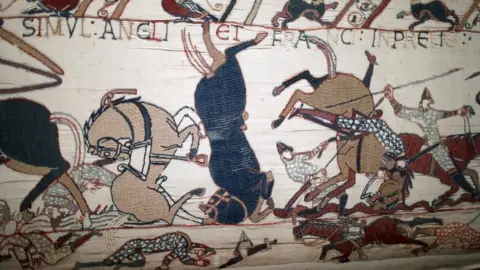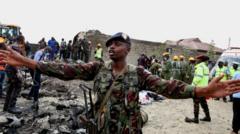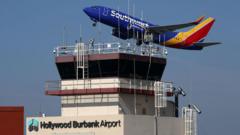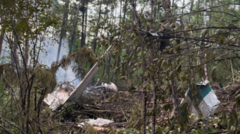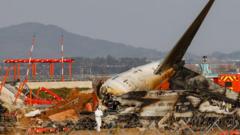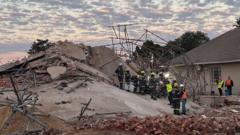The loss of Air India Flight 171 last month has led to a rising tide of speculation, as key details of the incident remain shrouded in uncertainty. The Boeing 787 Dreamliner was involved in a devastating crash shortly after departure from Ahmedabad, India, on its way to London, resulting in the tragic deaths of 241 individuals on board and 19 others on the ground, with only one survivor.
A preliminary report from India's Air Accident Investigation Bureau (AAIB) has shed some light on the situation but has left many fundamental questions unanswered. The document, released in line with international protocols, does not draw any firm conclusions regarding the crash's cause but provided insights that have sparked considerable debate among aviation experts.
The report mentions that moments after take-off, both fuel cut-off switches were moved from the "run" to the "cut-off" position, leading to a loss of engine power. Although the engines could be restarted, it was too late to avert the disaster. This action has raised eyebrows, particularly regarding the pilots' role during the flight. A reported exchange, where one pilot questions the other about the switches' activation and receives a denial, has drawn focus, yet the lack of detailed transcripts from the cockpit voice recorder leaves a significant gap in understanding the events leading up to the crash.
With these revelations, speculation is rampant, with some commentators suggesting possible intentional actions by one of the pilots. Such theories have been met with strong criticism from the Indian Commercial Pilots' Association, which cautioned against baseless assumptions that could harm the reputations of those involved and the grieving families. Campbell Wilson, Air India's CEO, echoed these sentiments, urging caution when interpreting the preliminary data.
While the AAIB has been the principal authority in the investigation, the implications of the crash also extend to American stakeholders, given that Boeing and GE Aerospace are involved. As pilots and aviation analysts express concern over the selective information shared, the impression left is that crucial context is missing. Questions about the cockpit dynamics during the critical moments before the crash remain unanswered, leaving many, including industry professionals, troubled by the report's vagueness.
Furthermore, the report's references to a prior FAA safety bulletin concerning potential issues with fuel cut-off switches on some Boeing models and Air India's failure to conduct necessary inspections raise additional safety concerns. Although the FAA insists that this issue did not compromise safety, calls to prioritize inspections across affected aircraft have been issued.
The ambiguity of the AAIB's preliminary report has fostered a belief among some that the conclusion may not be wholly transparent, with insinuations of an agenda influencing the presentation of facts. As the investigation continues, those seeking definitive answers may face a prolonged wait; international protocols suggest a complete report might not be available for up to a year, and history tells us it could take even longer. As we await further developments, the aviation community remains on high alert for clarity surrounding the tragic events of Air India Flight 171.




